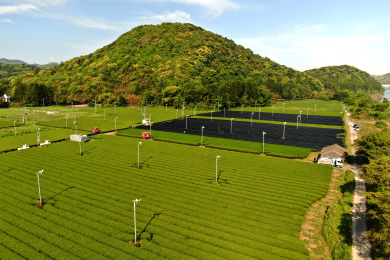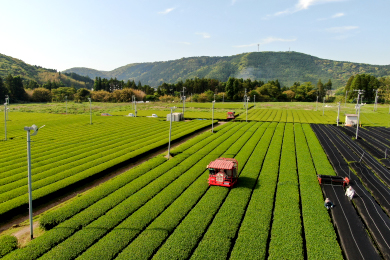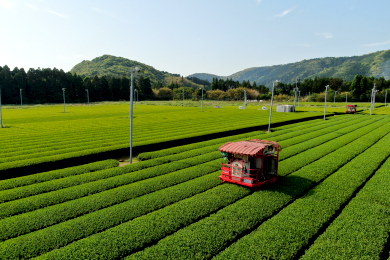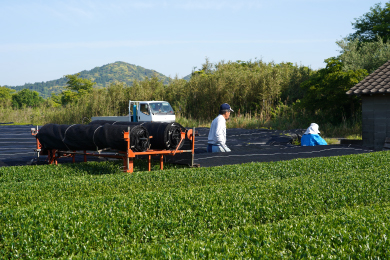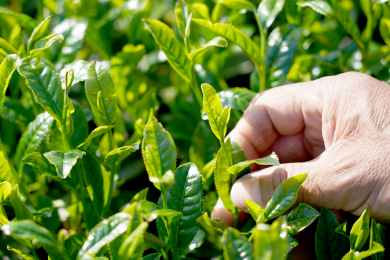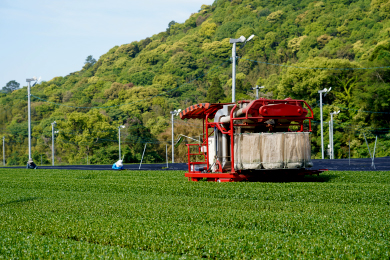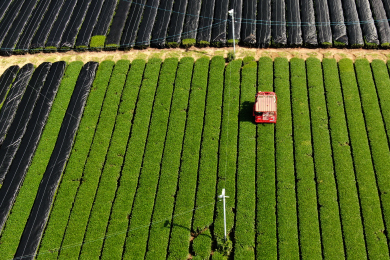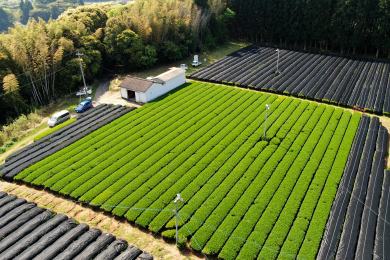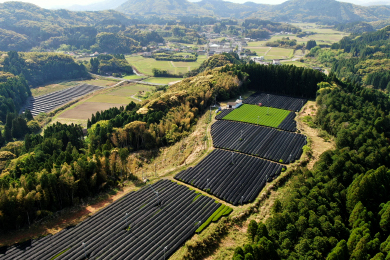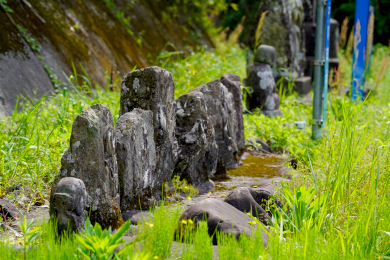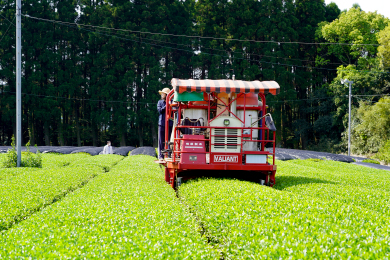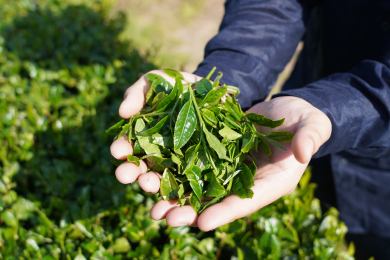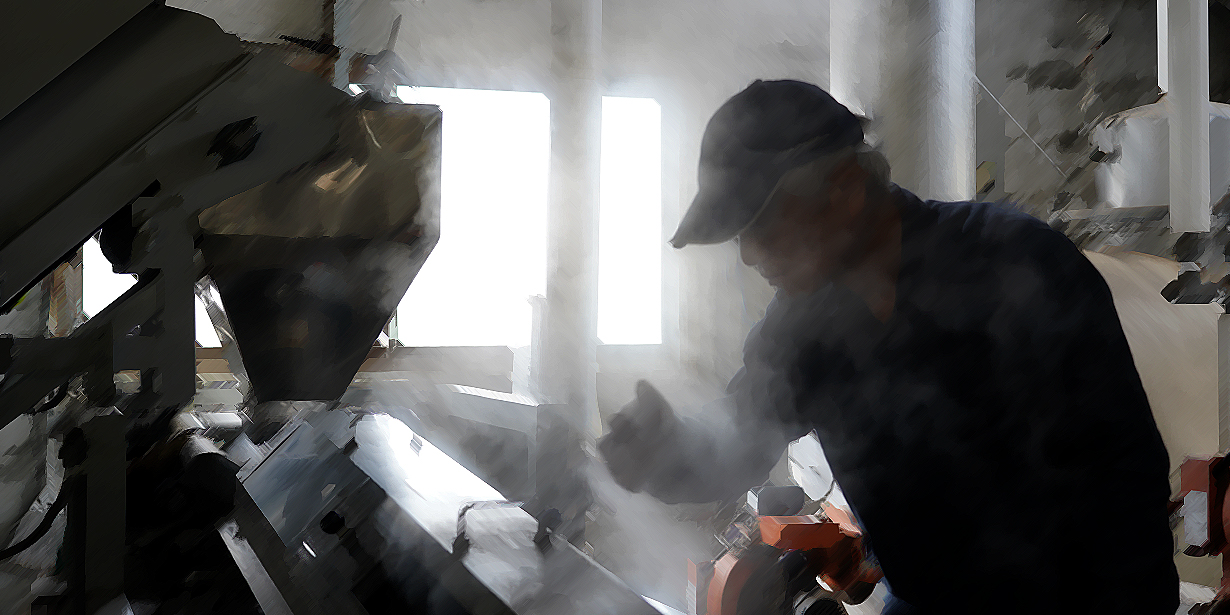
Sakihara Seicha insists on cultivation and production until we are satisfied.Everything we do is for
"The Best Cup Of Tea".
Three points of
Sakihara Seicha's tea
Integrated production and sales in Kagoshima, Kyushu
Kagoshima Prefecture is the second largest producer of tea after Shizuoka Prefecture. Sakihara Seicha uses only the best tea leaves grown in Satsumasendai City, Kagoshima Prefecture, and handles the entire process from cultivation to production in-house.
We do all of this in order to provide our customers with the "best cup of tea".
We can deal in many varieties of tea leaves.
Sakihara Seicha operates two fields with different characteristics and grows nine varieties of tea. We continue to pursue customer feedback and our own ideals, and sometimes it takes four to five years from the start of cultivation to the first tea picking to cultivate a new variety.
Currently, we produce seven varieties of tea.
The taste of tea is related to skilled workmanship.
The experience of a skilled tea master is essential to make the best tea from the best tea leaves.
At Sakihara Seicha, we do everything ourselves, from growing the tea leaves to manufacturing the tea, blending, and making the products, without any third party involvement.
Taste of teas continue to evolve every year and our highly skilled tea masters do our best to make them more delicious each year.
Introduction of the Tea Master
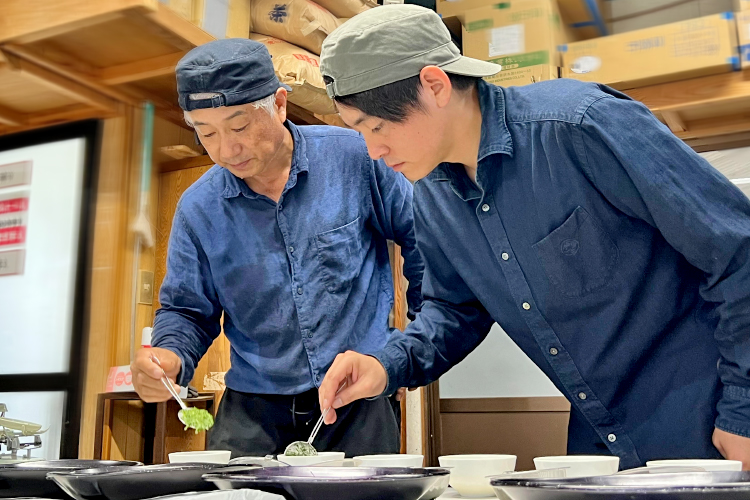
【3rd generation:Hiraku Sakihara】
We believe that what is essential for making delicious tea is "1. The definition of deliciousness," "2. The best tea leaves," and "3. The five senses (sight, hearing, smell, taste, and touch)" and "4. Experience of the tea master to approach the ideal".
We always aim for "a cup of tea that satisfies our customers" and "The best tea that we are satisfied with," and we do everything ourselves, from cultivation of tea leaves to tea production, blending, and product creation, without any third party involvement.
We hope you will fully enjoy the delicious teas created by Sakihara Seicha's "World View Of Tea".
Introduction to Our Tea Plantation
Sakihara Seicha has two tea plantations, one in Miyazato, downstream from the Sendai River, and the other in Jōkami, on a hill surrounded by mountains.
The tea grown in these two tea fields has different flavors and tastes.
- The River Plantation, "Miyazato": Known for its deep fog that blankets the area regardless of the season, Miyazato acts as a natural veil that enhances the tea's qualities. The result is a tea with a crisp and refreshing taste.
- The Mountain Plantation, "Jokami": Characterized by its clay-rich soil and significant temperature variations between day and night, coupled with deep fog, Jokami produces tea leaves with rich and distinctive personalities.
The same variety of tea can be grown in different fields, resulting in teas with different flavors. The tea leaves are blended by tea masters to produce Sakihara Seicha's tea, which is loved by many customers.
Sakihara Seicha grows nine varieties of tea leaves, each with its own unique characteristics.
Sencha Production Process

Tea Picking
We carefully pick the tea that has been nurtured with our hands and eyes. This is the first step toward delivering another year of our finest teas to you.

Steaming
The steaming process, known to significantly influence the taste, aroma, and color of the tea, is meticulously carried out. We steam the tea at the optimal temperature and for the perfect duration, carefully determined to ensure the best quality.
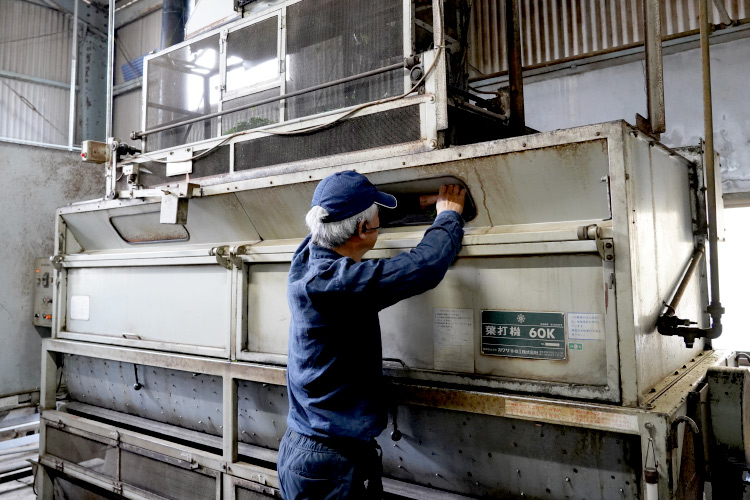
Leaf Spreading
This stage involves rolling the tea leaves while applying hot air. It is a process that enhances the color and aroma of the tea leaves, and is also said to preserve their freshness.
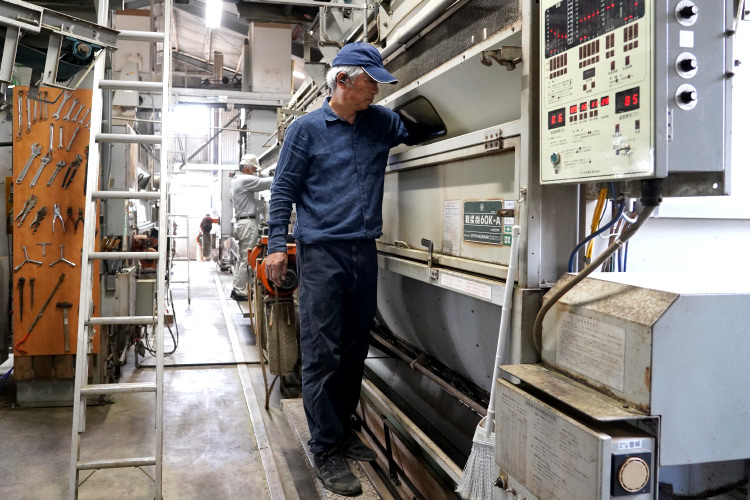
Primary Rolling
This is done while applying friction and pressure. This process softens the tea leaves and reduces the water content inside the tea leaves.
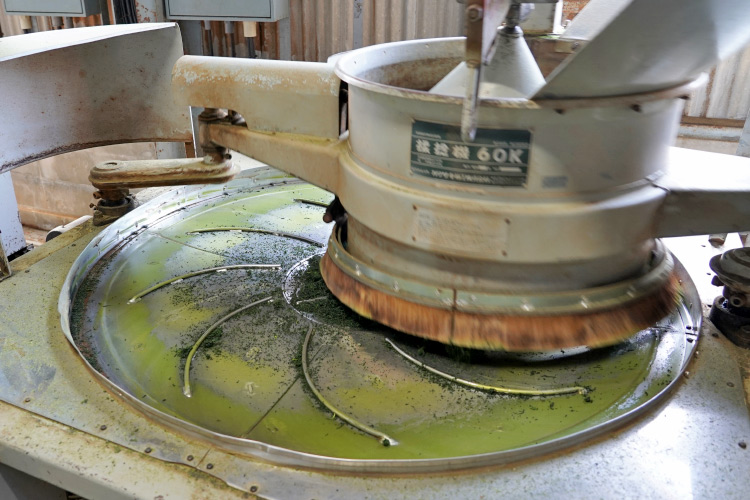
Rolling and Twisting
After the initial coarse rolling, the tea leaves are further rolled to break down the cells more finely. Breaking the cells helps to homogenize the components within the leaves.
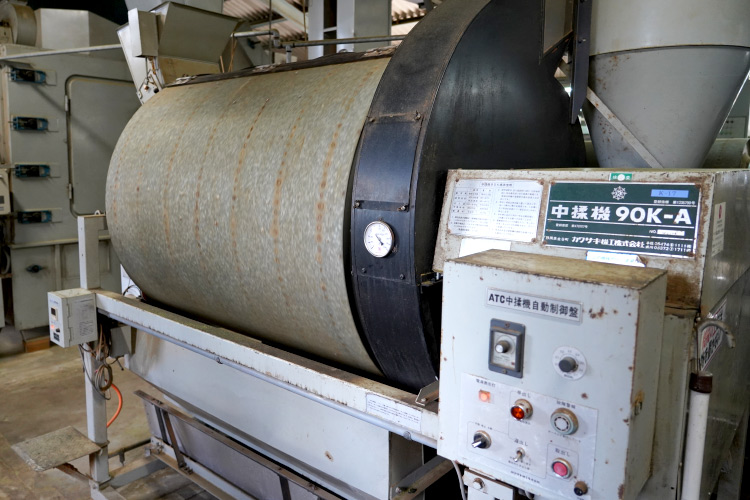
Intermediate Rolling
Applying pressure and rolling to the tea leaves, which are still moist and have become clumped together during the twisting process, helps to loosen and separate the leaves. This is an important step in tea production.
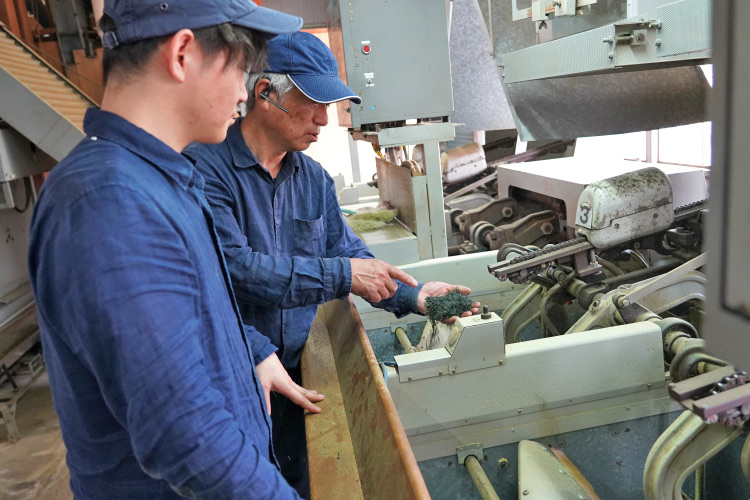
Final Rolling
The tea leaves are then rolled in one direction to remove water from the inside of the tea leaves and to shape them into the unique shape of green tea.
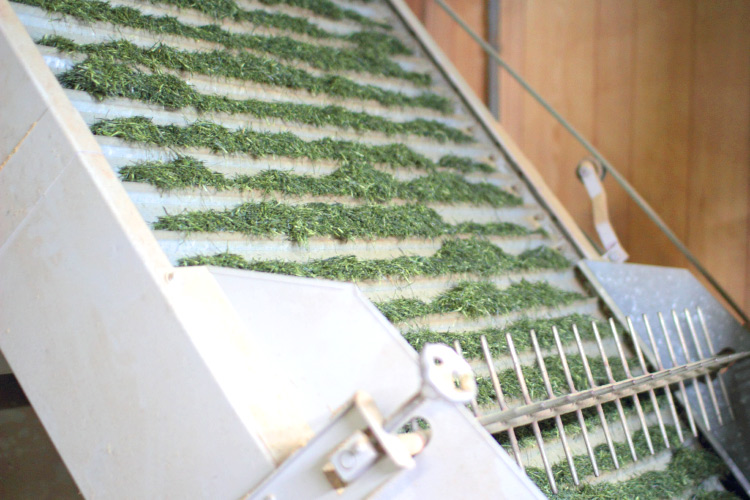
Drying
After completing the rolling process, the tea leaves are further dried to enhance their aroma. This step marks the completion of 'Aracha,' or rough tea.
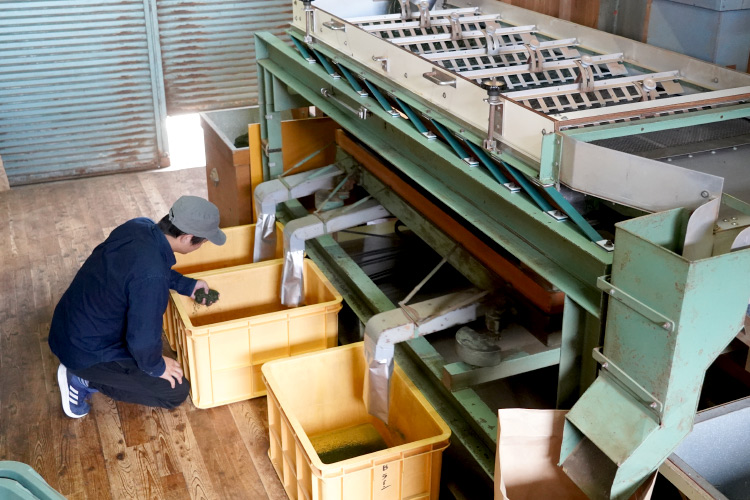
Sorting
The rough tea is then sorted into different categories based on size, part of the leaf, and degree of drying, using sieves and fans.
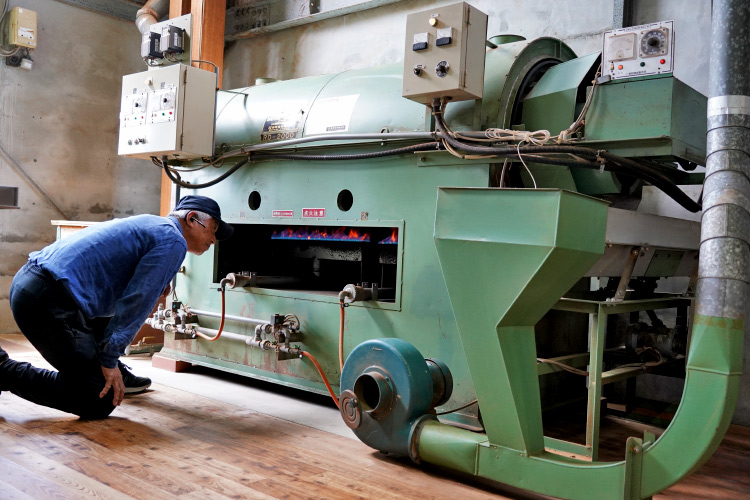
Fire-quenching
This process involves drying the sorted parts of the tea leaves at temperatures best suited for each. During this step, the leaves develop a sheen and their aroma is further enhanced.
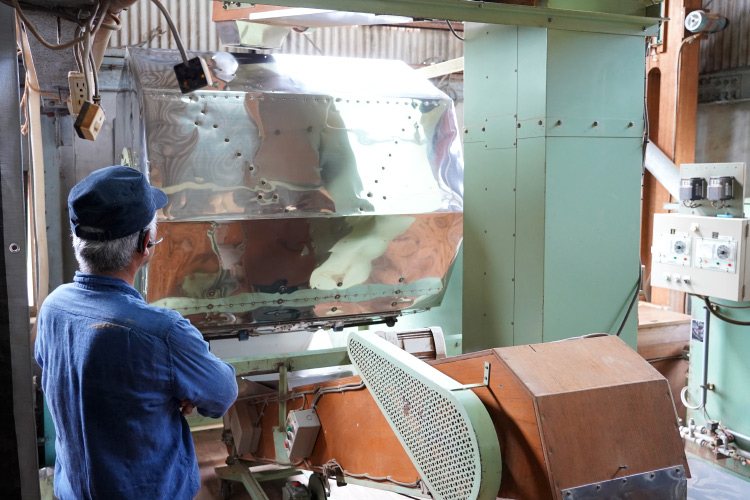
Blending
Sakihara Seicha's tea masters blend the teas while observing the balance of taste, aroma, and color. New products are sometimes created at the request of customers.
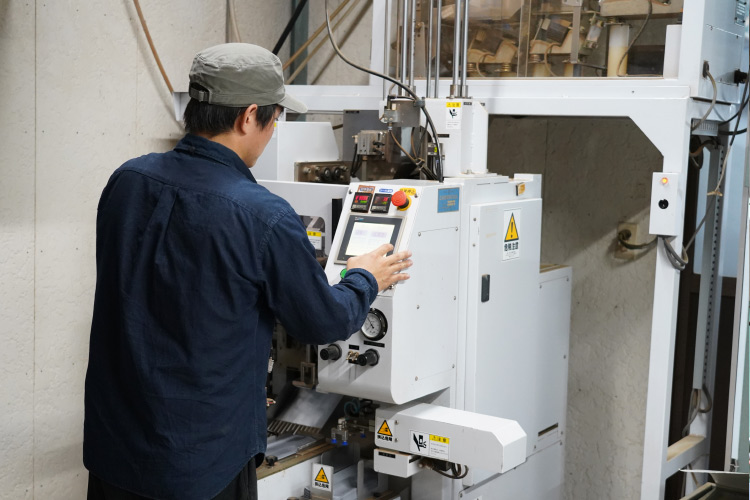
Bagging
The final step is to package the tea in Sakihara Seicha's original packaging, completing the process. A distinctive feature of our company is that we conduct all these steps in-house.
Types of Sakihara Tea
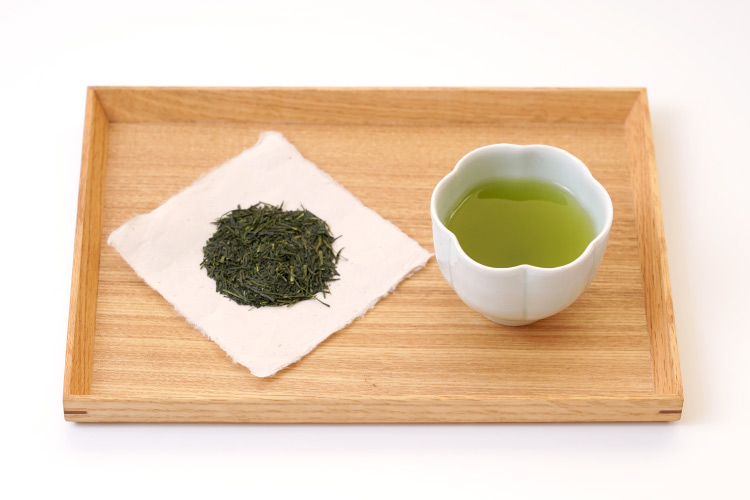
Sencha
We have "Sendai Homare" series, our representative brand of Sencha and matured Sencha teas. Even within the same Sencha, there are differences in aroma and sweetness depending on the production method and blend. Please compare and enjoy differences.
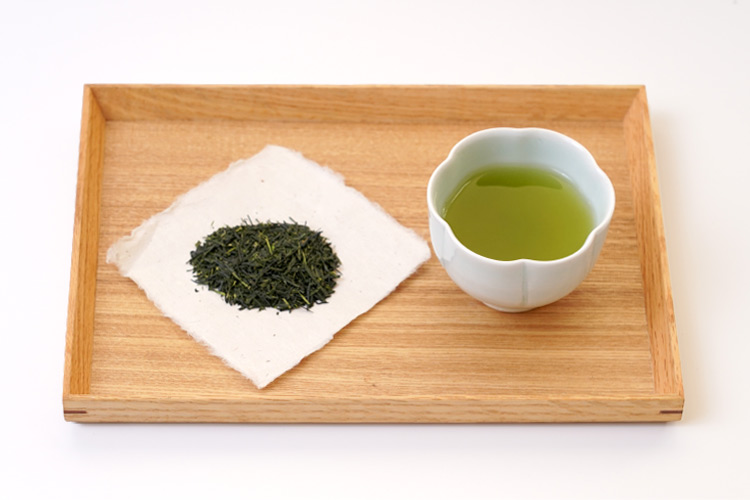
Gyokuro
Gyokuro is also a variety of green tea. It is made using tea leaves harvested from tea gardens where sunlight is deliberately limited. This process reduces the production of catechins, resulting in a tea with less astringency and a stronger umami flavor.
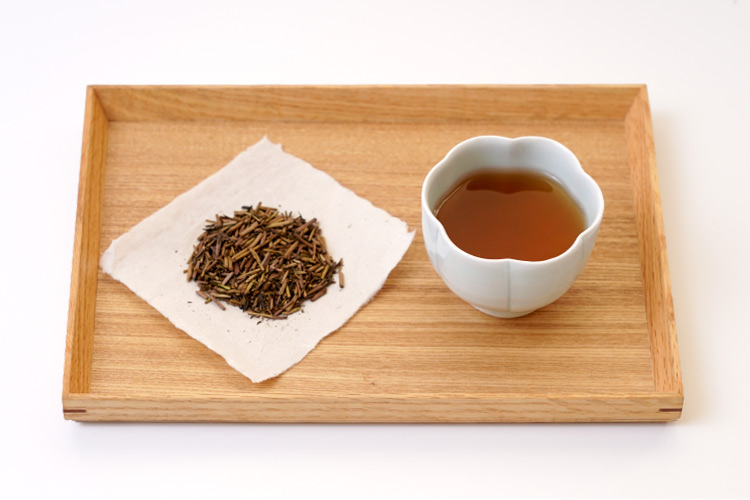
Hojicha
Our sencha is roasted over high heat to give it a unique flavor. It is characterized by its savory aroma and clean aftertaste, making it a perfect match for oily meals. It is also recommended to drink before bedtime due to its low caffeine content.
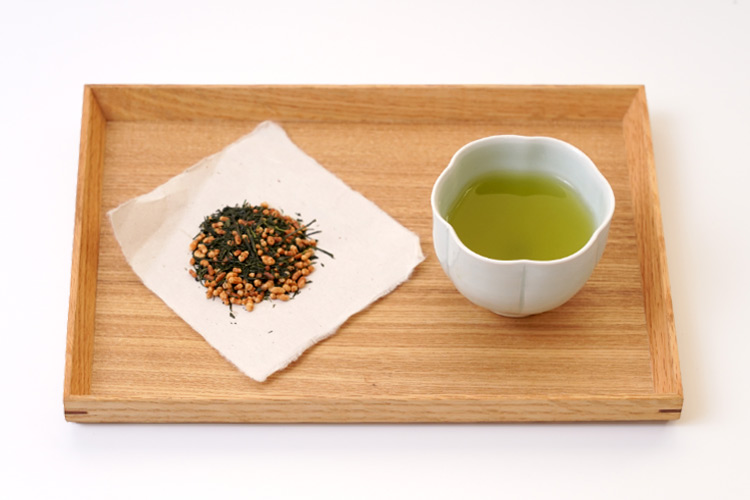
Genmaicha
We blend our tea with carefully selected mochi rice. The combination of the toasted mochi rice and tea creates a refreshingly light flavor, which has become a popular choice among our customers. Enjoy the unique blend that is a hallmark of Sakihara Tea's dedication to quality.
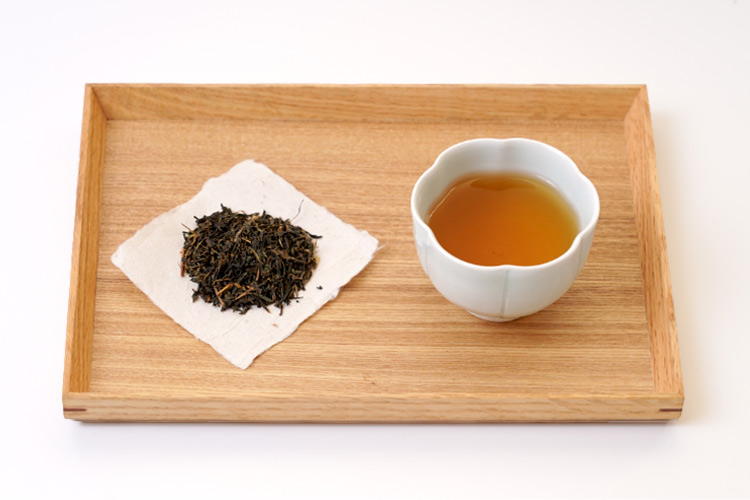
Oolong Tea
It is a semi-fermented tea between green tea and red tea, made by selecting large leaves that have just emerged from the ground rather than sprouts, drying them in the sun, and then fermenting them. It is called Oolong Tea because the leaves are black like a raven and some are curved like a dragon.
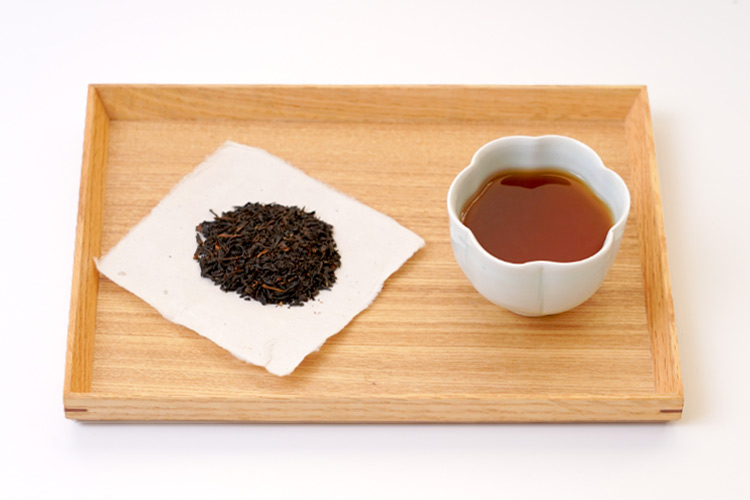
Black Tea
We produce black tea that is rich in aroma and naturally sweet, filling the mouth with its delightful taste. We cherish the process of making black tea, emphasizing the natural flavors and aromas that come from our own tea plantation.This dedication to homegrown tea ensures a truly authentic experience.
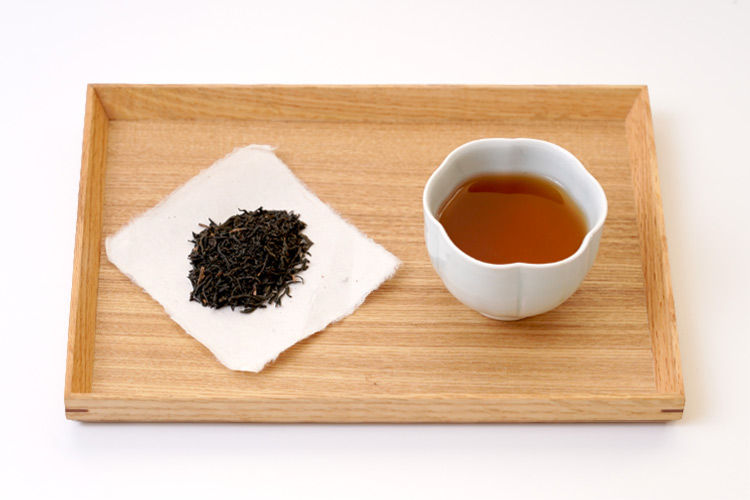
Pu-erh Tea
It is made by fermenting carefully selected tea leaves with yellow, black, and white koji malt for Shochu, using a unique method over a long period of time. It is a unique Kagoshima Pu-erh Tea.

